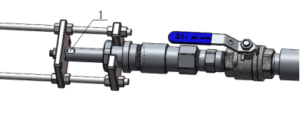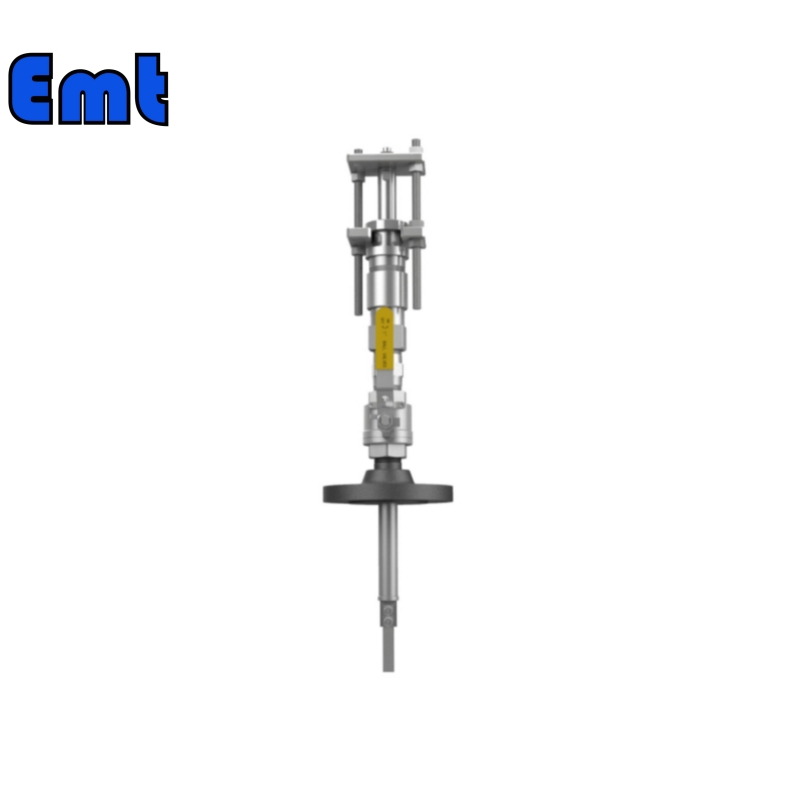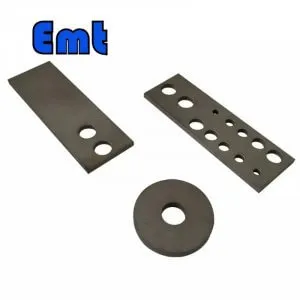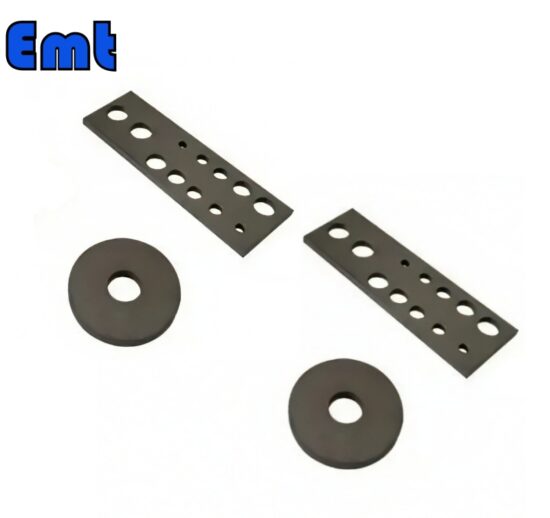Introduction to 2″ ANSI Flange and Retractable Corrosion Coupon
A 2″ ANSI flange is a type of pipe flange standardized by the American National Standards Institute (ANSI). It can connect pipes, valves, pumps, and other equipment to form a piping system. The “2 inch” refers to the nominal pipe size (NPS), meaning it is designed to fit pipes with a nominal diameter of 2 inches.
A Retractable Corrosion Coupon is a device designed to monitor corrosion rates inside pipelines, vessels, or industrial systems. Its retractable nature allows it to be inserted and removed without shutting down the system. Coupons can be installed or removed while the system is operating, making it ideal for continuous processes. Installation and removal typically require only basic hand tools (e.g., wrenches or clamp handles). No need for complex equipment or multiple personnel—a single technician can complete the task.

Modular Components
Compatible with various coupon materials and shapes (strip, rod, disc) for different environments.
Often working with isolation valves and sealing glands for safe removal under pressure.
Key Components of the Term
- 2″ (2 Inch):
Refers to the Nominal Pipe Size (NPS) — not the exact internal or external diameter, but a standardized size used in piping systems. - ANSI (American National Standards Institute):
A U.S. organization that standardizes flanges under the ASME B16.5 specification, which ANSI adopted. - Flange:
A mechanical component works in connecting pipes, facilitate inspection or modification, and ensure leak-proof sealing when combined with gaskets and bolts.
Coupon Shapes
Corrosion monitoring often begins with the strip-type coupon, the most widely used shape in industrial systems. This flat, rectangular metal piece offers a broad surface area, making it ideal for general corrosion measurement. Technicians frequently install it in straight-flowing sections of pipelines, where it accurately reflects uniform corrosion. In addition, its simple geometry allows for quick fabrication and easy weight-loss analysis, which remains a standard method for determining corrosion rates.
Moving beyond the basics, many professionals turn to the cylindrical or rod-type coupon when they need to simulate localized corrosion or test materials under turbulent flow conditions. Unlike the flat strip, the rod shape exposes a different surface profile to the fluid, which can better replicate certain real-world conditions. Moreover, its symmetrical design helps engineers evaluate pitting or crevice corrosion more effectively. Because of its versatility, many industries rely on rod-type coupons for more detailed corrosion studies.
Furthermore, the disc-type coupon adds flexibility to corrosion testing by offering a compact and uniform shape that suits confined spaces or specialized equipment. Engineers often install it in rotating or high-shear environments, where its round profile minimizes disruption to fluid flow. Additionally, the disc provides a consistent area for electrochemical analysis, making it valuable for environments where precision matters. As a result, teams often use disc coupons in advanced corrosion monitoring systems, especially when space or flow dynamics present challenges.
Common Types of Corrosion Coupon Connection Way
| Type | Description |
|---|---|
| Weld Neck | Welded to the pipe; ideal for high pressure and temperature. |
| Slip-On | Slips over the pipe; easier to install; for low-pressure systems. |
| Socket Weld | Pipe is inserted into a socket; good for small-diameter, high-pressure use. |
| Threaded | Screwed onto threaded pipes; used in low-pressure applications. |
| Blind | Used to close the end of a pipe or valve. |
| Lap Joint | Used with stub ends; good for systems that need frequent dismantling. |
Pressure Ratings (Class)
ANSI flanges are also categorized by pressure class, such as:
- Class 150
- Class 300
- Class 600
- Class 900
- Class 1500
- Class 2500
A 2″ Class 150 flange, for example, is suitable for a lower pressure than a 2″ Class 600 flange.
Typical Dimensions of a 2″ ANSI Class 150 Flange (ASME B16.5)
| Property | Value (Approx.) |
|---|---|
| Outside Diameter | 6.00 in (152.4 mm) |
| Bolt Circle Diameter | 4.75 in (120.7 mm) |
| Number of Bolts | 4 |
| Bolt Hole Diameter | 0.75 in (19.0 mm) |
| Flange Thickness | 0.69 in (17.5 mm) |
(Values vary slightly by flange type and pressure class.)








There are no reviews yet.